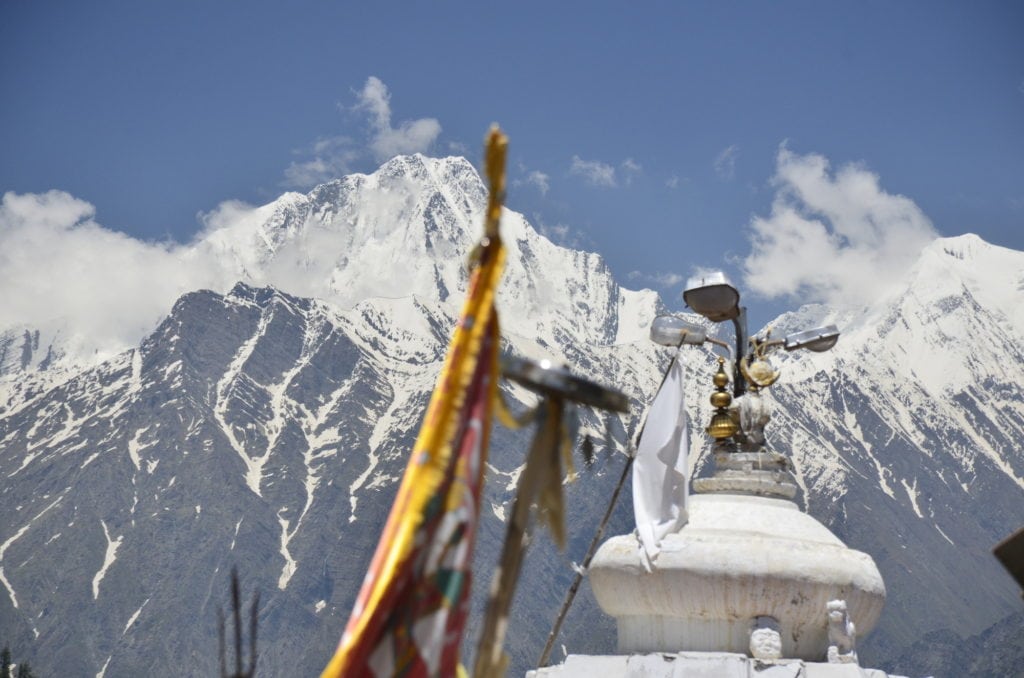Samatva
Byte Sized Travel Stories
people, places and stories.
nothing else.
just the trivial things.......
that make travel interesting....
and memorable
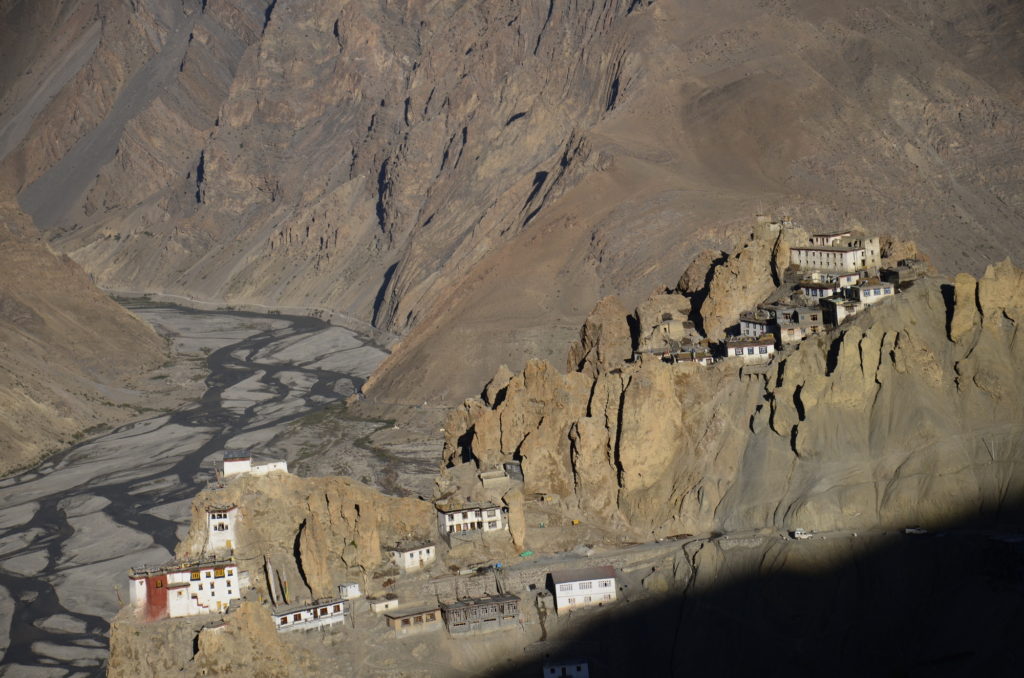
Coming out of Mud, Dhankar
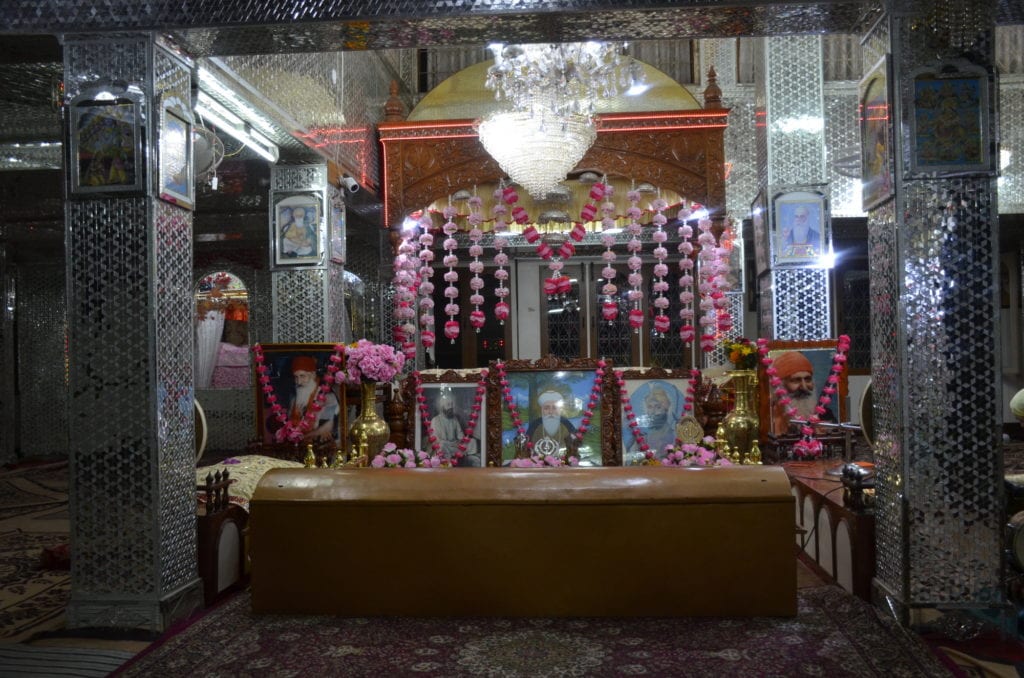
Variety of Manikiran
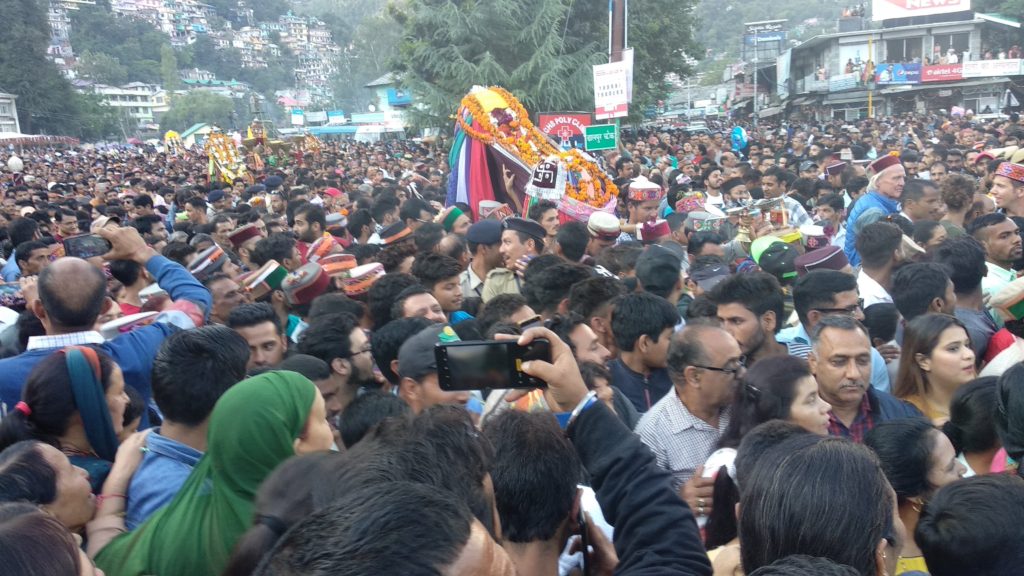
When the whole town is a temple, Kullu Dussehrah
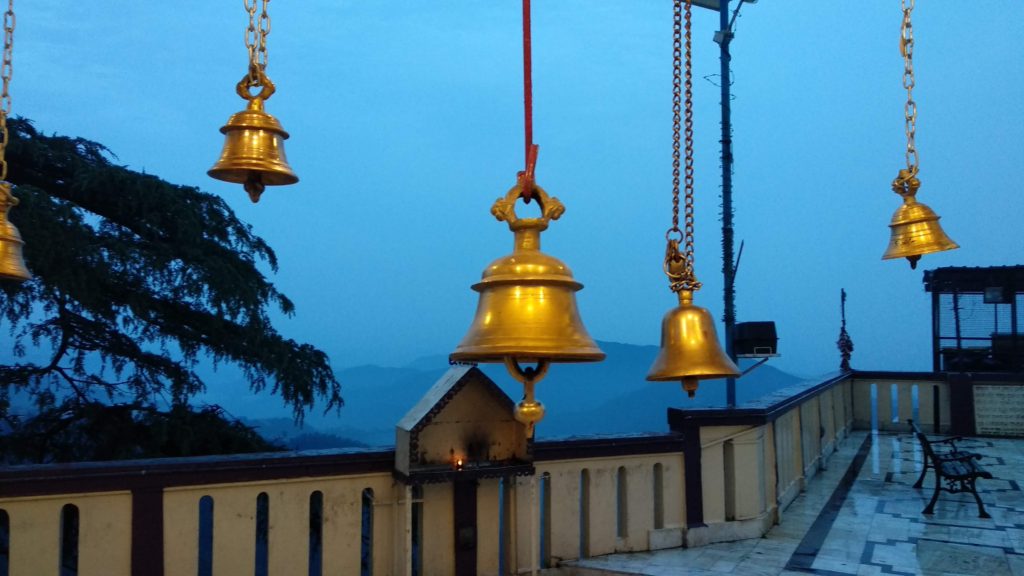
Everyday life at Kali Bhari, Shimla
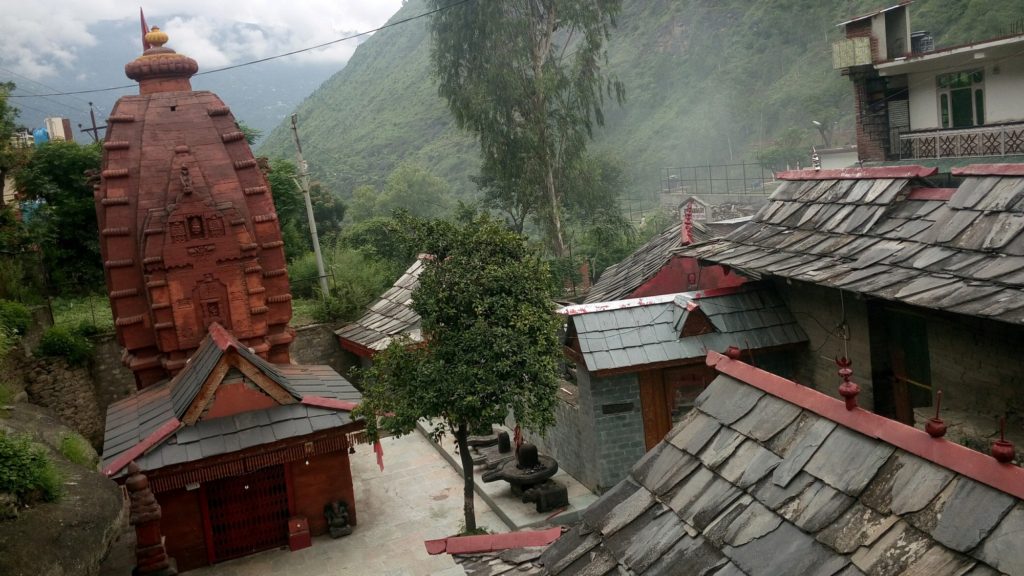
Sun Temple of Sutlej Valley, Nirath
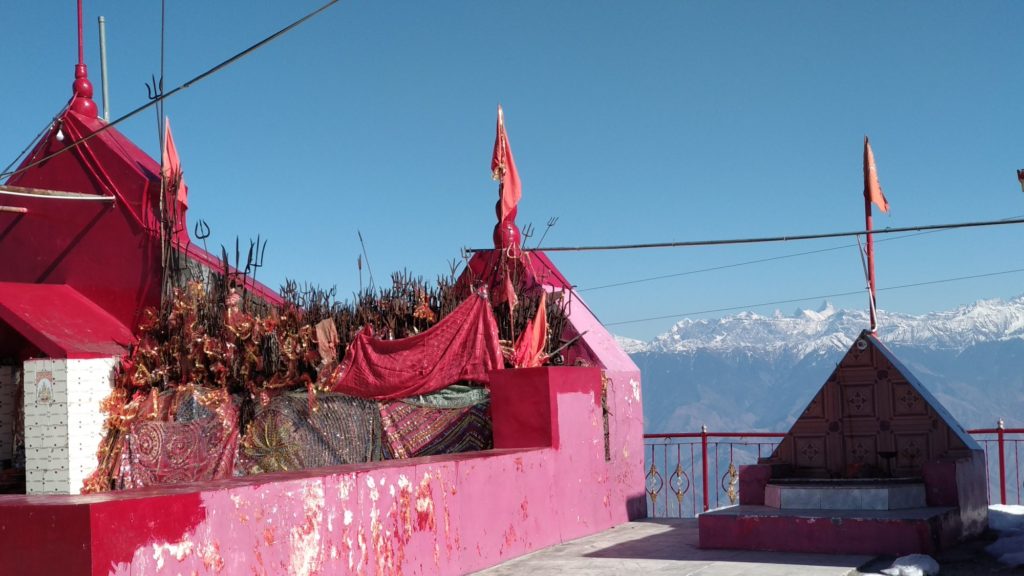
Mataji, Mountains and Maggi, Dainkund
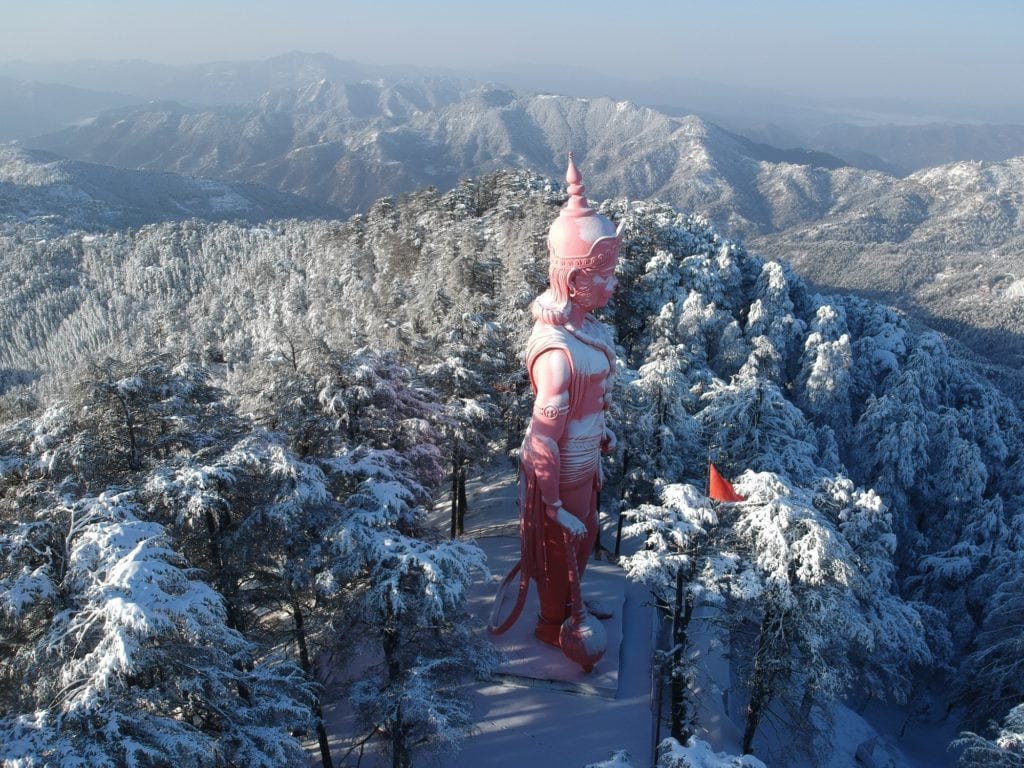
Hanumanji at hilltop, Shimla
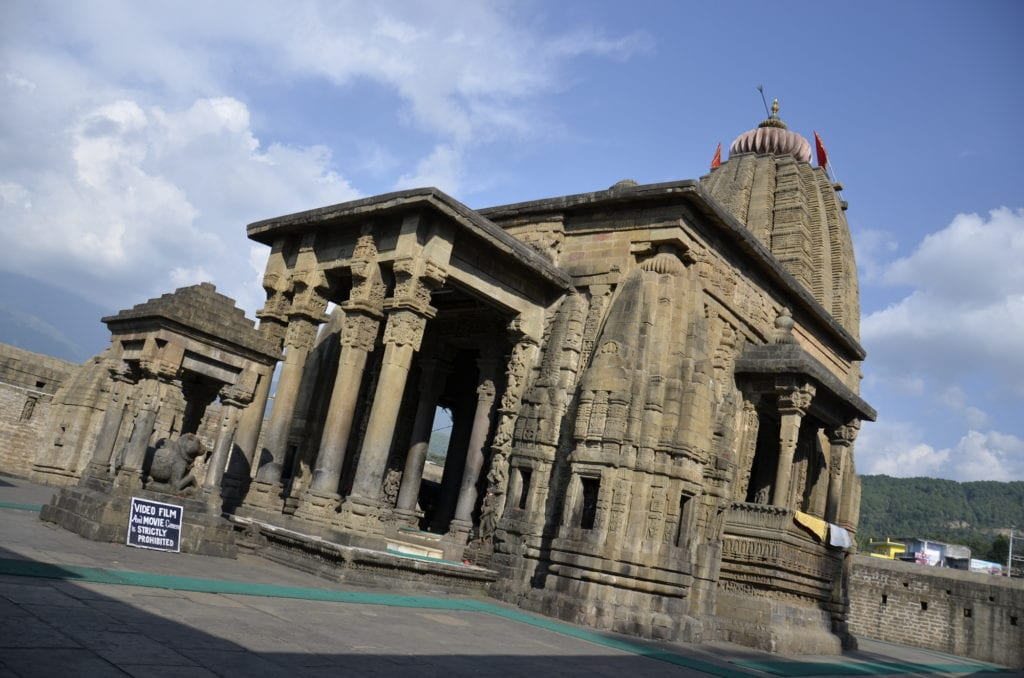
Perfect setting for the soul. Baijnath
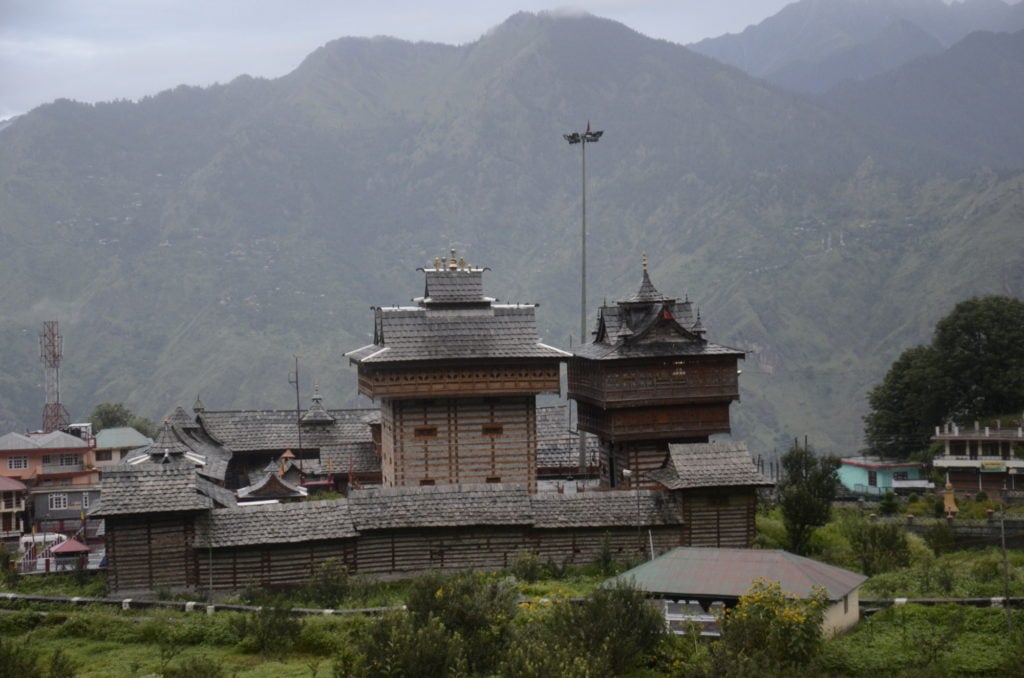
One of her kind, Bhimkali at Sarahan
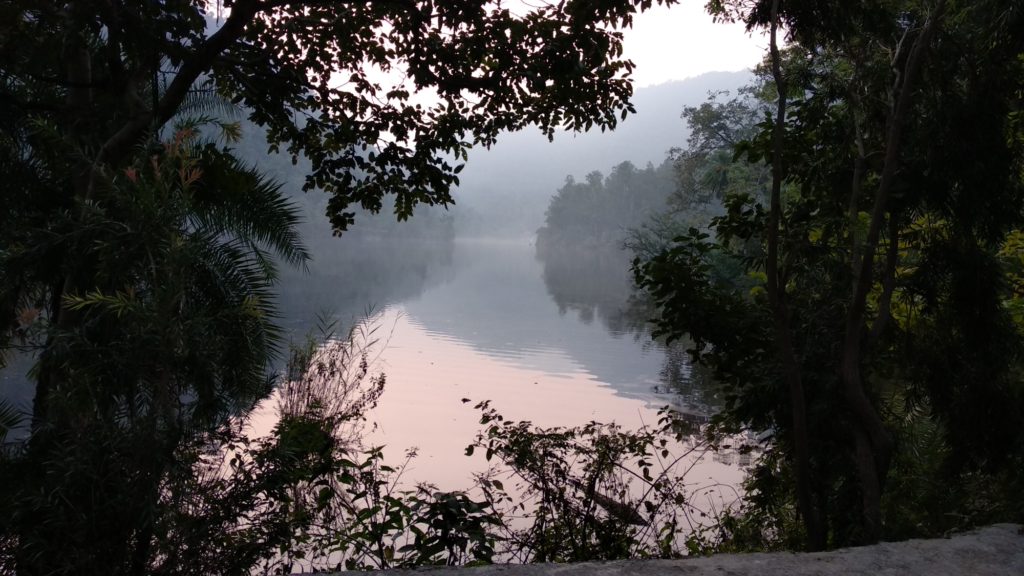
Lake placid at Renukaji
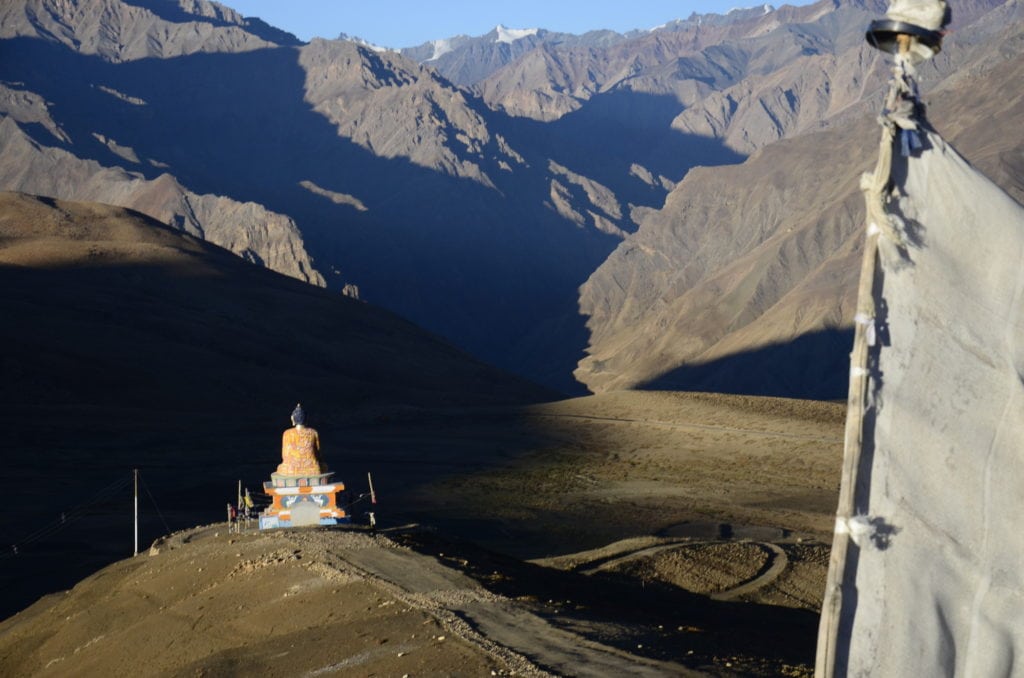
The perspective of Buddha, Langza
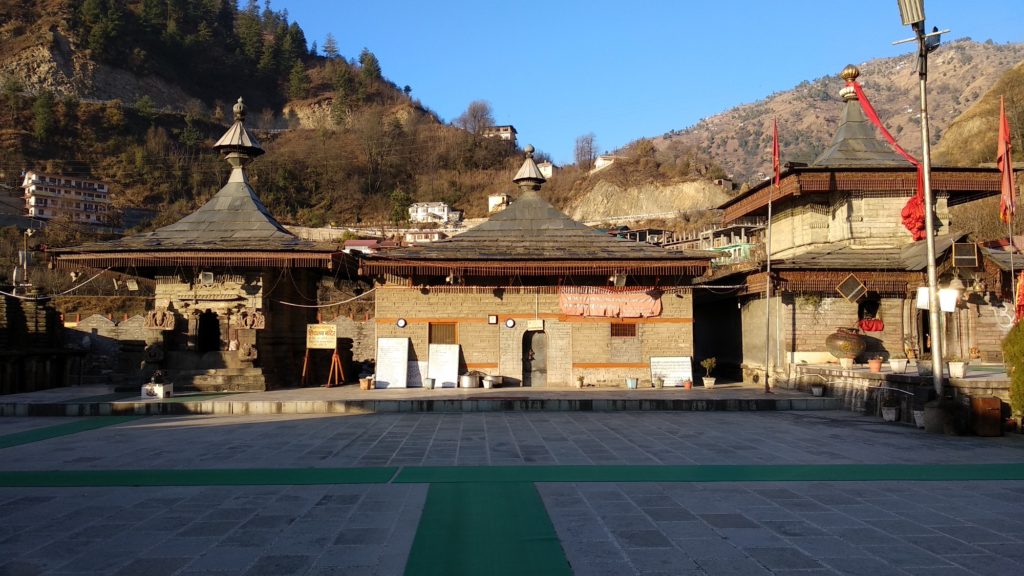
Hatkoti, on its own
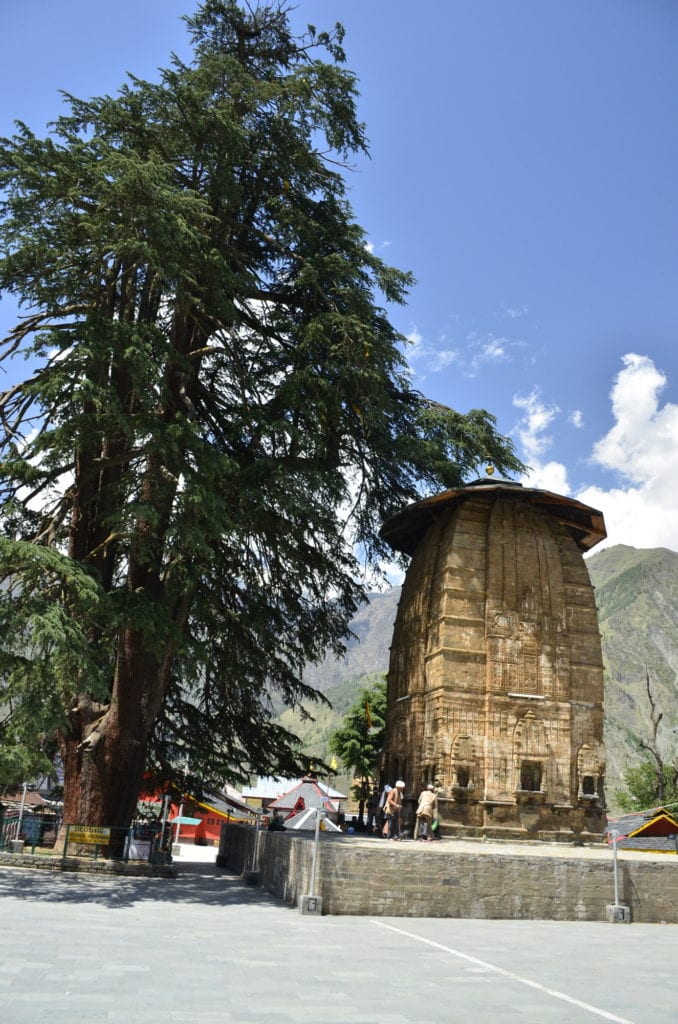
Land’s end at Bharmour
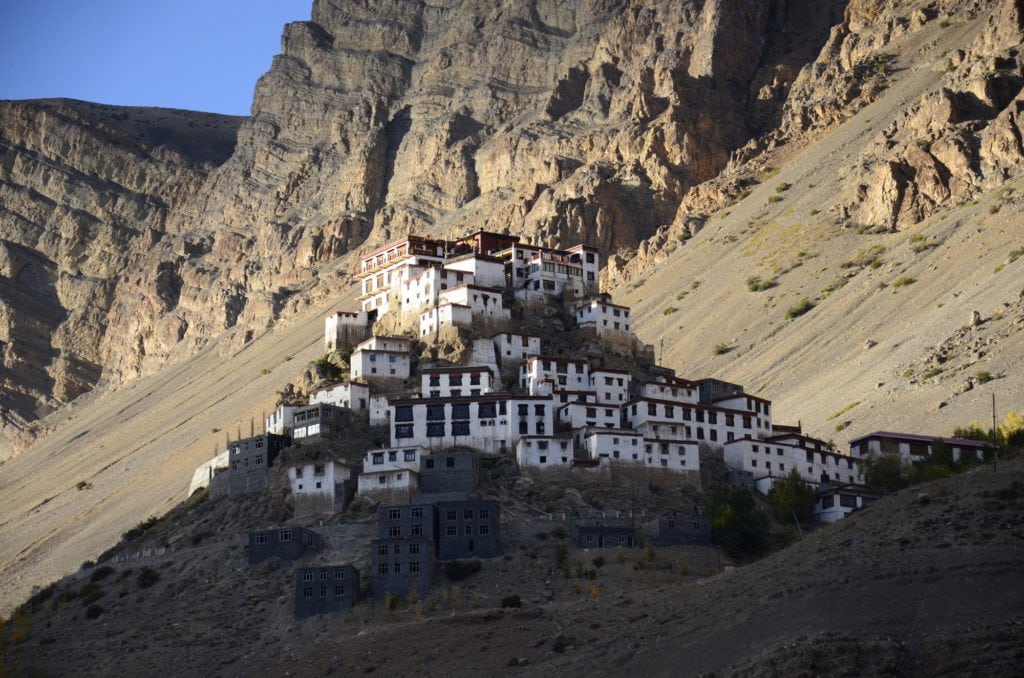
The pleasure of doing nothing at Ki
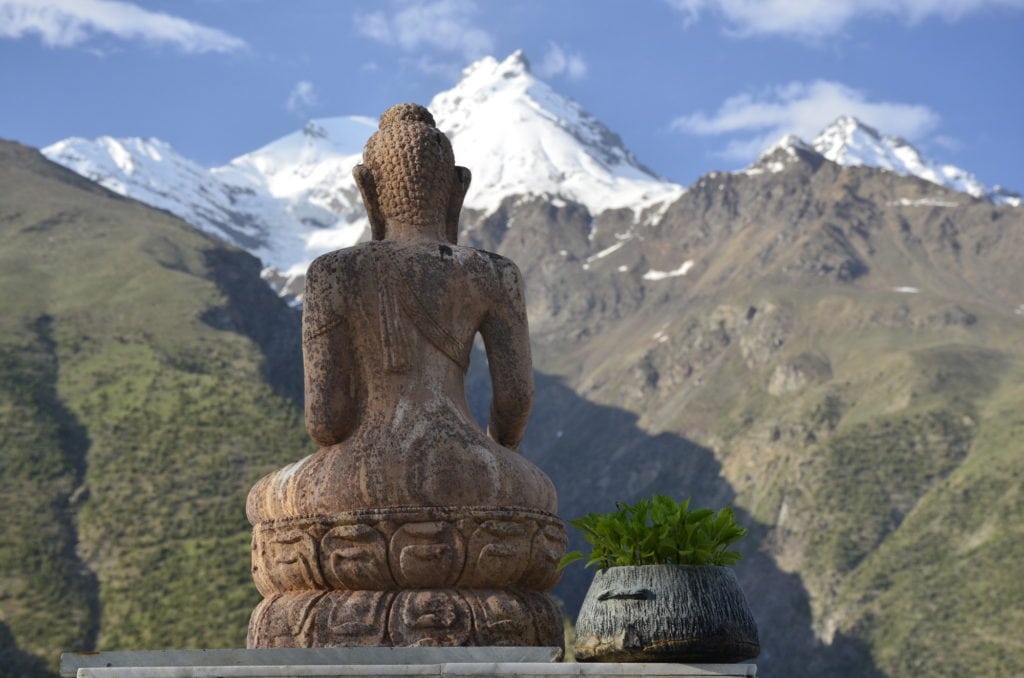
Philosophy at a glance, Kardang
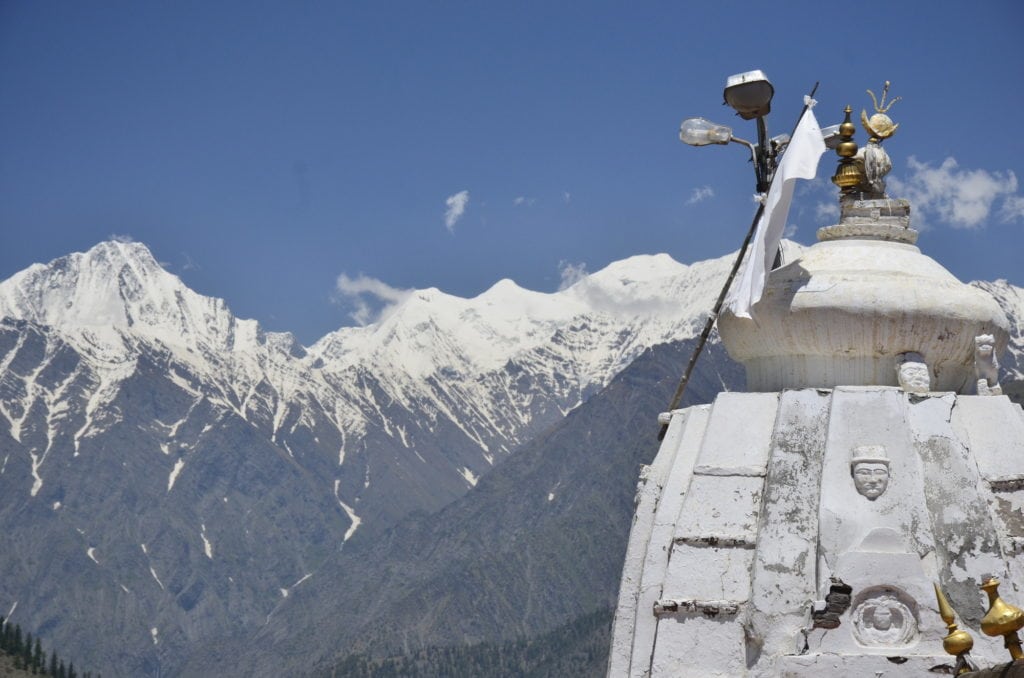
Harmony lived each day, Triloknath

Philosophy at a glance, Kardang
Kardang Monastery. Temples of Himachal … 4.
Kardang is one of the many monasteries in Keylong. Probably one of the oldest, the building has been rebuilt maybe several times. It looks quite modern despite being 900 years old.
It is across the Bagha river that flows fast, thin and deep. The walk requires either a steep trek down and up, crossing the river (or) a long winded drive which crosses the river further ahead at Tundi with a gentle, but long drop and climb.
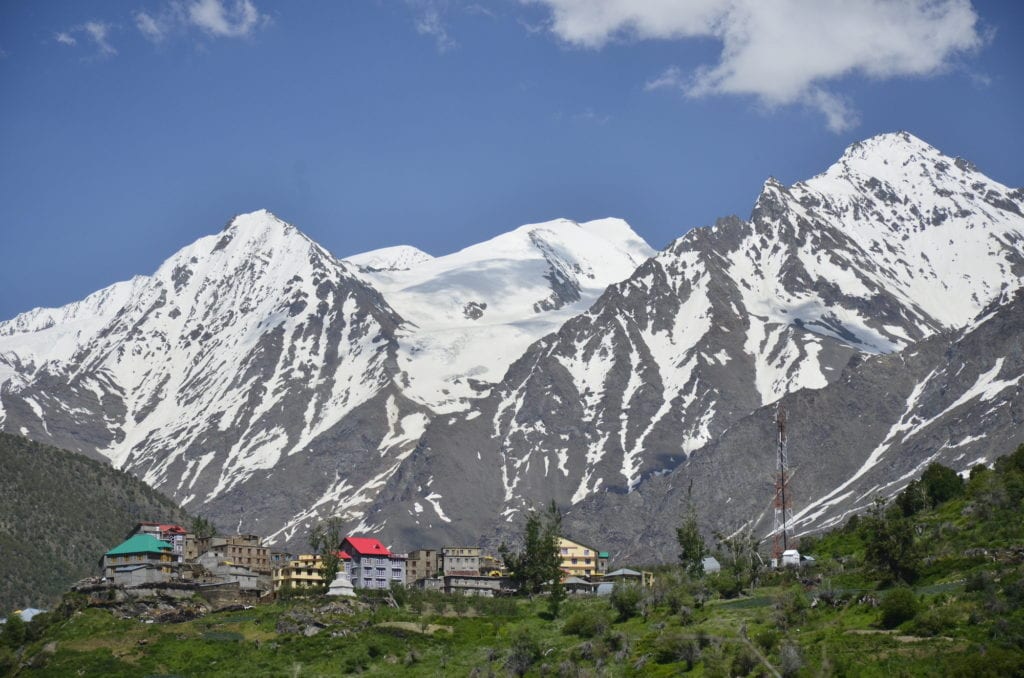
The views across Keylong
Armed with a scooty, I chose the drive and by evening, reached the monastery. The monastery has several things to see, including the rock carvings that I unfortunately missed. However, the most striking part of the monastery is outside of it. A sitting Buddha, maybe three or four feet tall, made of sandstone that you could mistake to be from Orissa. The Buddha is seated on a pedestal that is chest high, with a small pot of plants next to him. He overlooks the snowy peaks of the north, Ladakh and beyond.
To gaze along Buddha’s line of vision is to live the entire Buddhist philosophy in a single moment. There is absolute nothingness in terms of civilization. The view jumps over all of Keylong, the grassy slopes above it, and the treeless rock faces further above. You see Buddha and then the sharp snow clad mountains at the distance, in one frame.
Few places summarise their philosophy in just the setting. Kardang is one such.
Kardang, across Keylong, Lahual, Himachal.
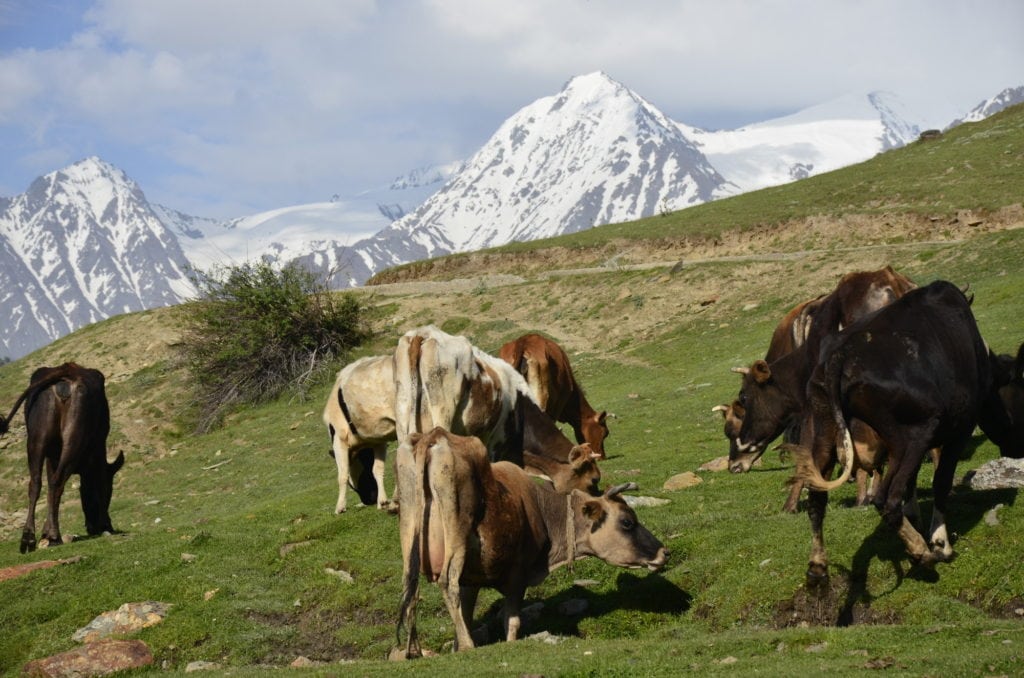
Grazing pastures near Kardang monastery
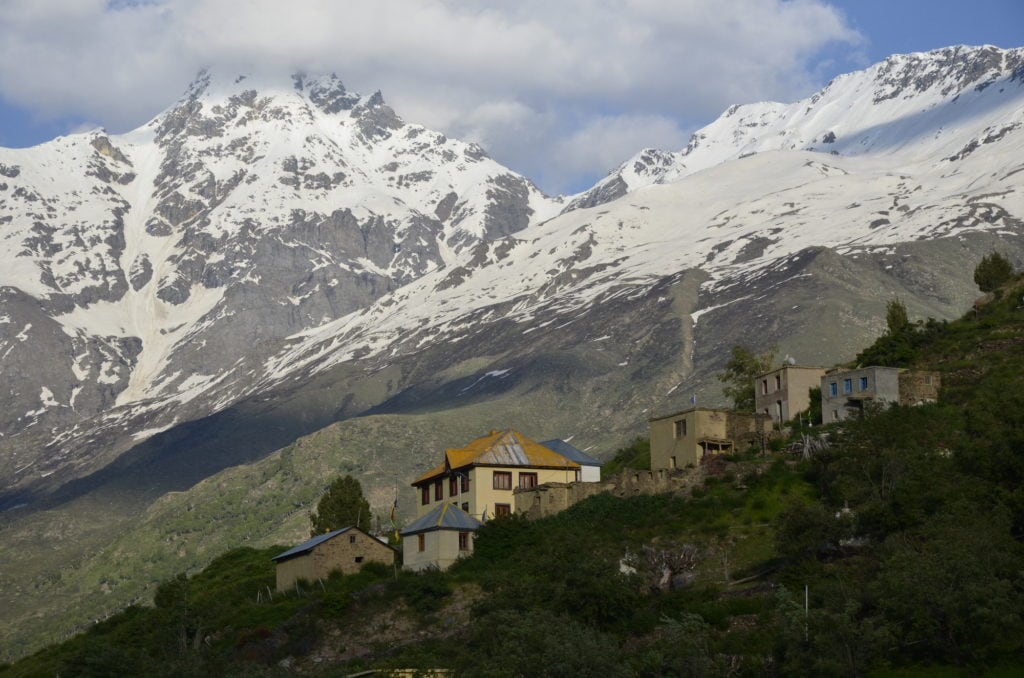
Views behind the Kardang Monastery
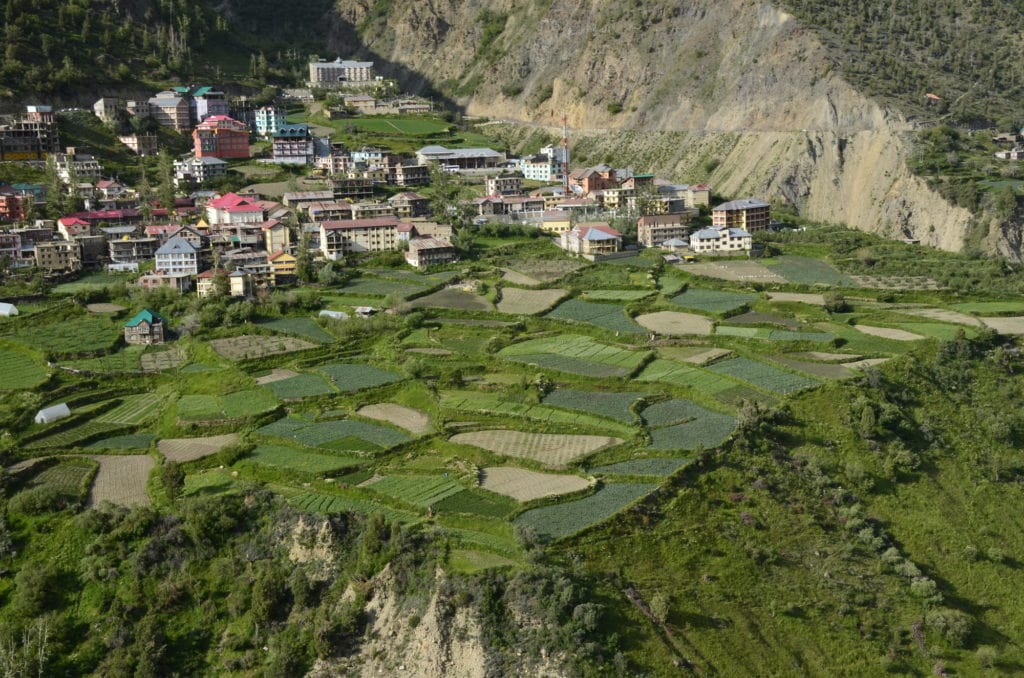
Keylond and its fields, from Kardang Monastery
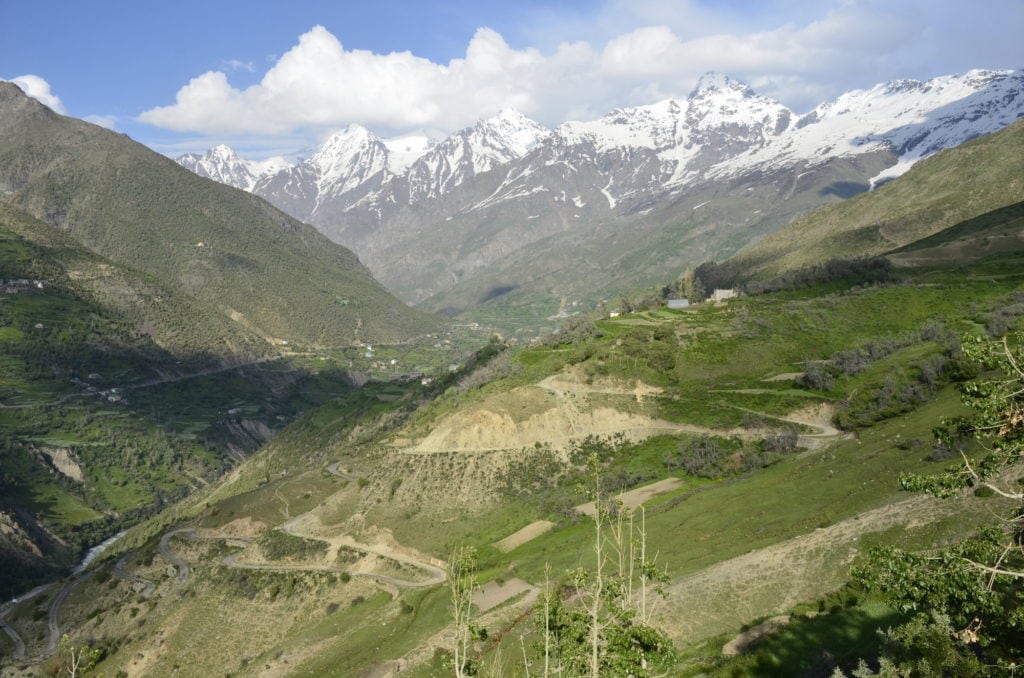
The Bagha valley at Keylong

The perspective of Buddha, Langza
Langza. Temples of Himachal ….12
The river Spiti is the spine of the region and Kaza, the largest town. It is about 3800 meters altitude. The river valley is somewhat narrow and hardly has any vegetation along it. A number of villages rise up the valley at different heights. Each has a patch of land, some large, some small, that surprisingly is cultivable.
Langza is one such village. It has less than 150 people. It is at 4250 meters. It is a sharp climb from the valley on barren mountain face. The road snakes through gaps in the mountains and then it suddenly opens up to the vista. You can see tiny specks of the village and houses at a distance.
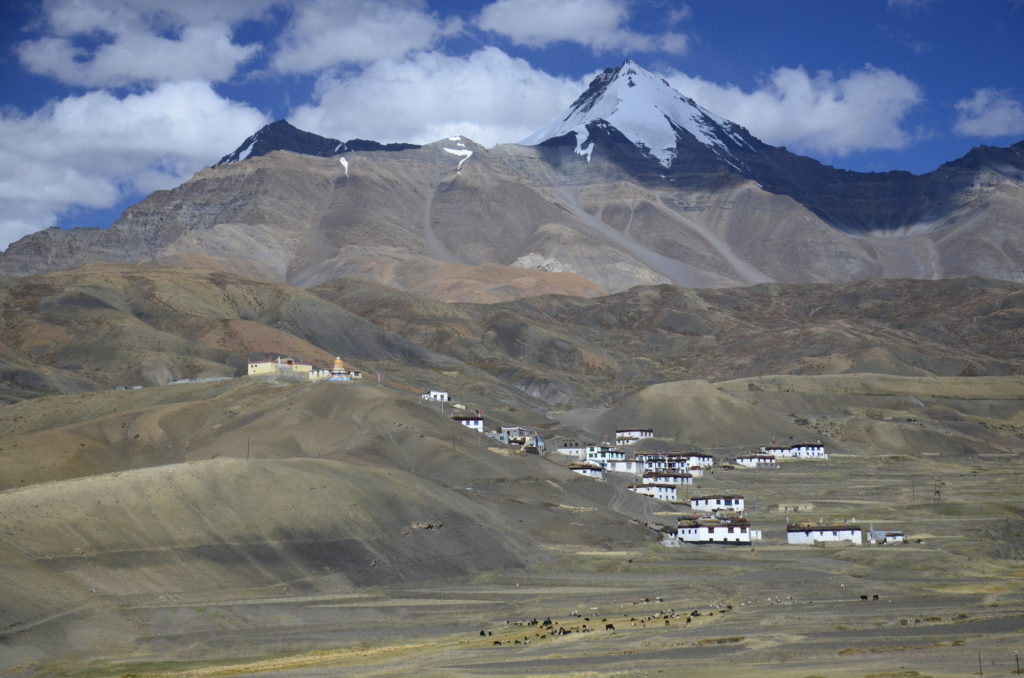
The first glance of Langza
The centrepiece of the village is the Buddha statue, giant, maybe 40 or 50 feet high. He overlooks the vast plains and it is difficult to get a sense of proportion with all that space. Right behind the Buddha is the 21000 feet Chau Chau mountain. With snow all around the year, it looks like a ice cream cone.
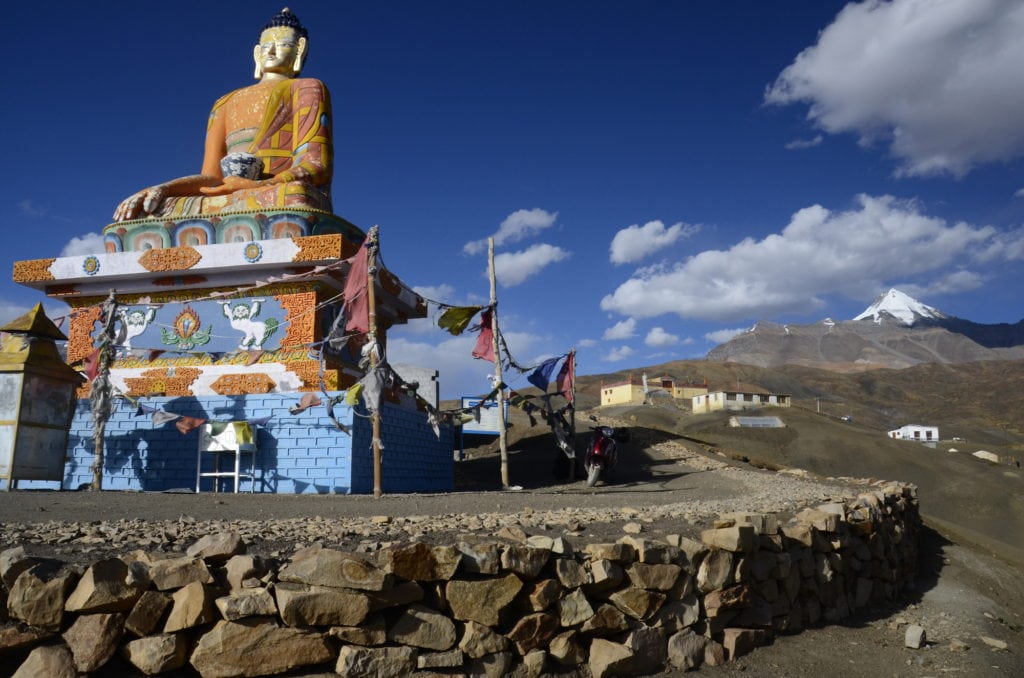
Buddha and Chau Chau mountain
There are a couple of houses that host guests. When I reached early afternoon there was no one around at the place I was planning to stay. A toddler asked me to settle down and said his dad will come in a while. Time kind of doesn’t make sense here and he eventually came, hosted, guided and cooked for me. The womenfolk are totally engrossed in the farm work and don’t waste a minute of sunshine in late summer. Langza is also known for fossils which I didn’t buy from the two women bent on selling to me. I should have. I had plans for Annapurna in the autumn and thought I’d buy them there. I should have bought some in Langza.
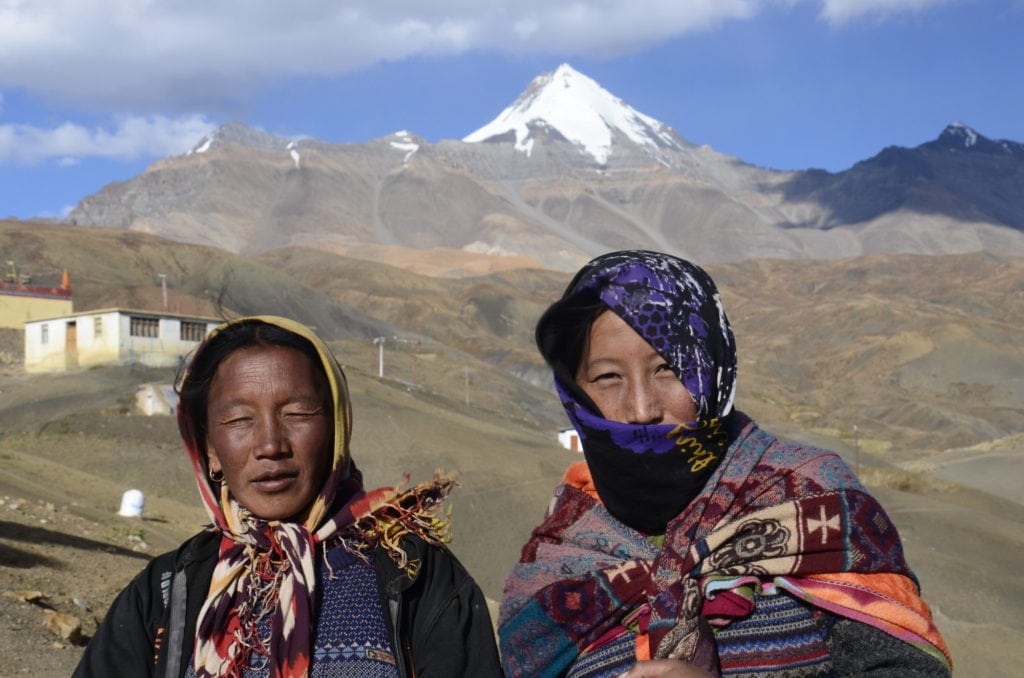
High street retail at Langza, Fossil sellers
Langza also leads up to Hikkim which the world’s highest post office; and further on to Komic which has a road at 4600 meters.
Langza and the Buddha, at 4250 meters, more than take the breath away. It is a different perspective.
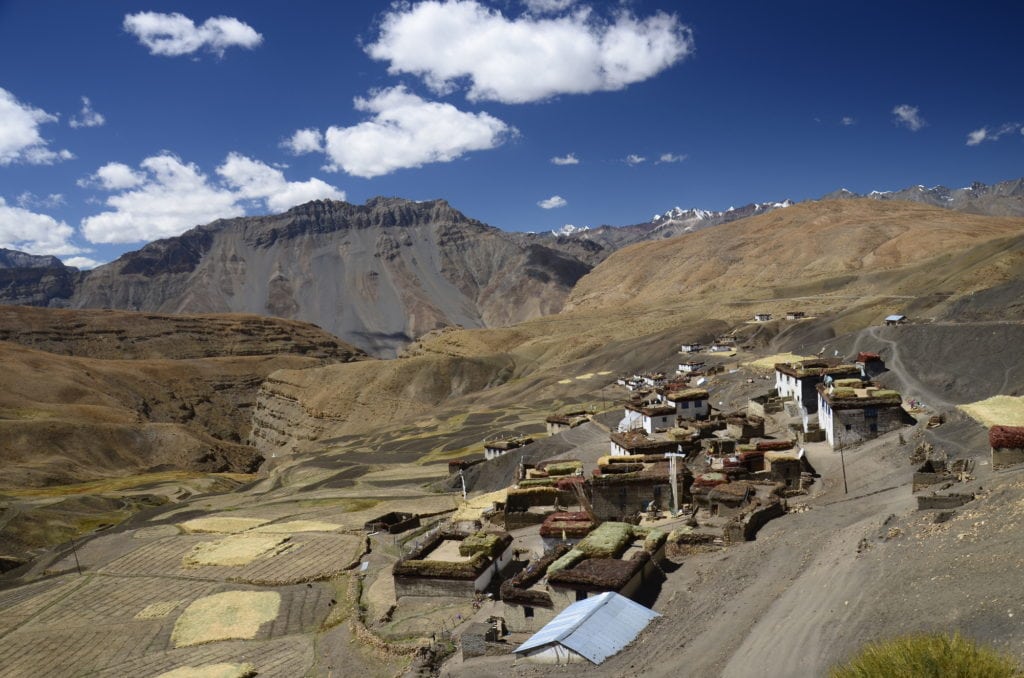
Around Langza 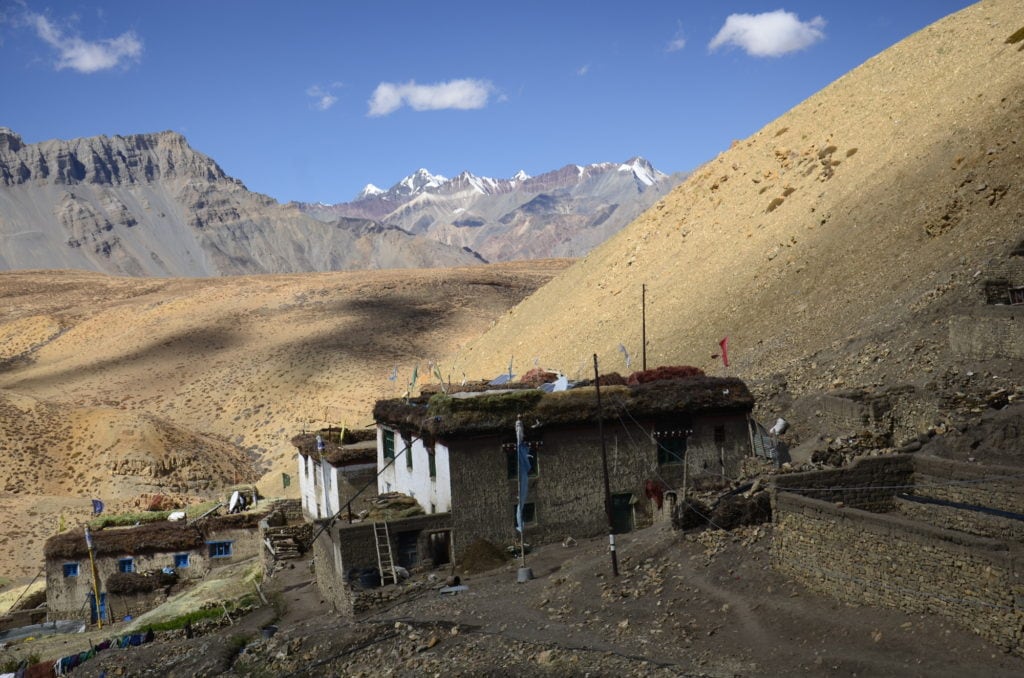
Around Langza 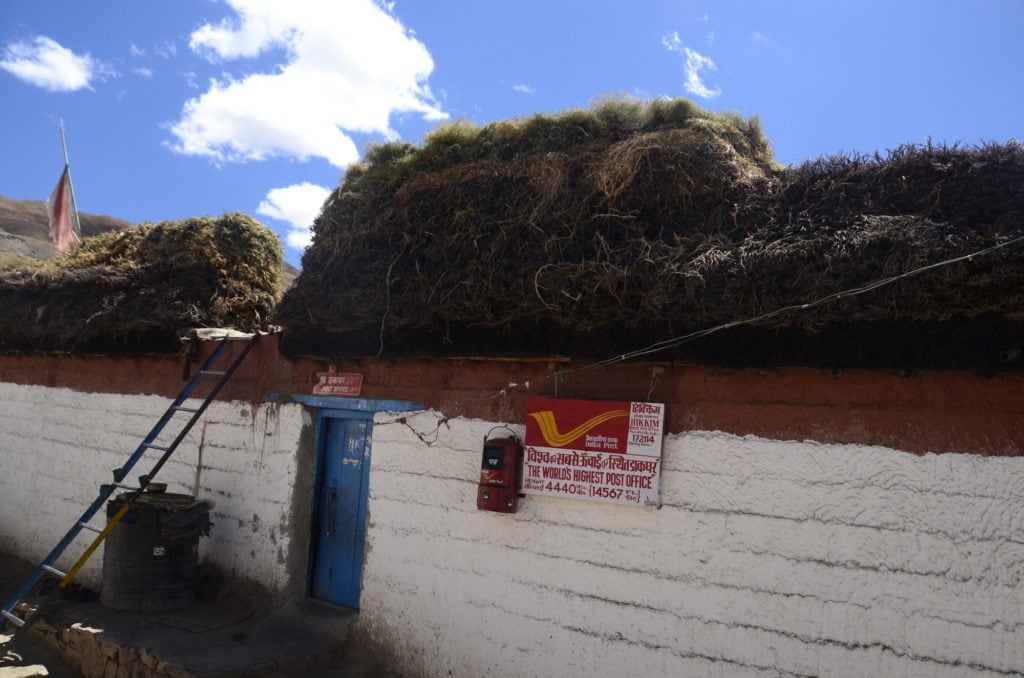
Post office of Hikim
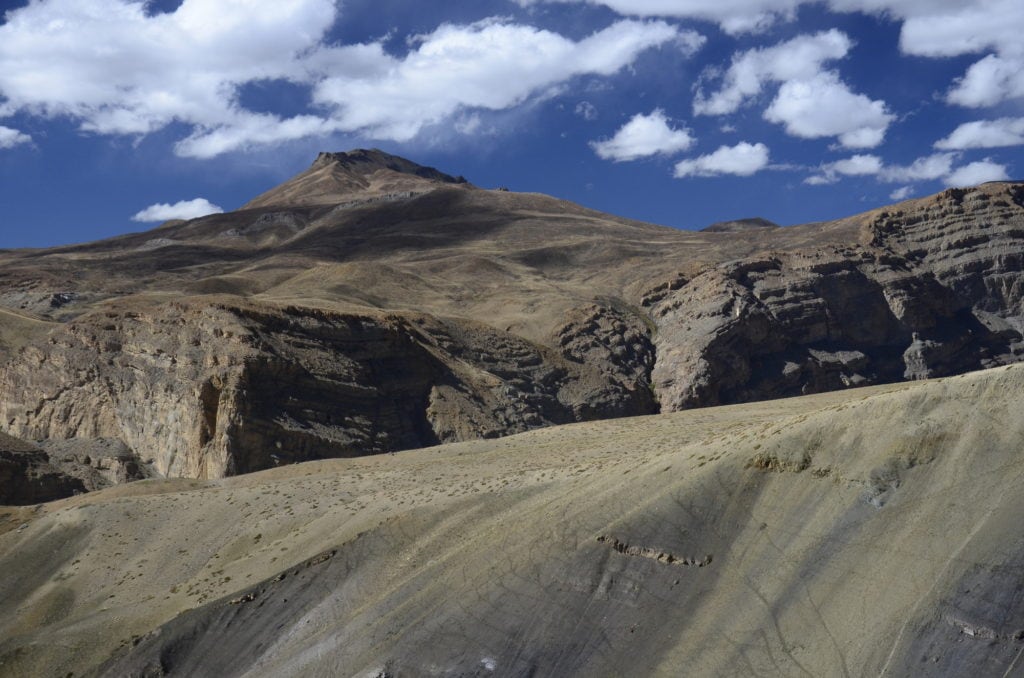
The landscape of Langza

Harmony lived each day, Triloknath
Triloknath. Temples of Himachal…14
Triloknath is a small, but primary temple in Lahaul valley of Himachal. The valley is cut off for six months each year. The snow blocks the passes and the residents just live out the winter. Every now and then, a chopper addresses emergencies; and drops firewood when the winter sours. That will soon change as the tunnel near Manali will make it accessible all year.
The Chandrabagha, as Chenab is called in Lahaul, defines the Lahaul valley. A thin strip of green stretches on the sides of the river continuously. Then suddenly there is a sharp rock outcrop with a vertical face, almost as if someone worked on it. Across the river. Triloknath temple is on top of it.
It is a totally nondescript temple with a deep message. Its original identity is claimed as both Hindu and Buddhist, 1000 or 2000 years old. The deity is worshipped as Shiva by Hindus and as a bodhisattva by Buddhists. The form of worship defines harmony. There are both Hindu and Buddhist priests sitting together. The pujas alternate between the traditions every few hours. The festivals also keep flipping between Hindu, Buddhist and common festivals. This is not photo-op secularism but deep lived harmony.
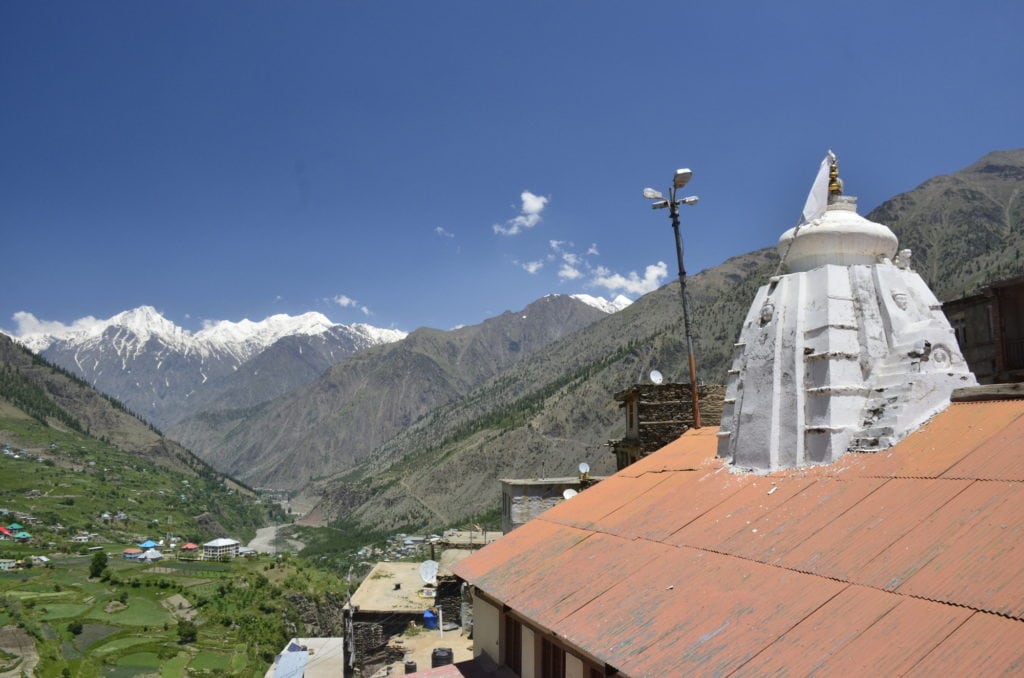
Triloknath towers above the Chandrabagha valley
The landscape around adds to the harmony. There are stunning patches of greenery amidst the sand and rock face. Chenab snaking through the thin valley. Suspension bridges adding mystery to the landscape. Streams cutting through mountain passes to feed Chenab. I was happy riding a scooter and took more than 4 hours to cover the 40 km distance along the valley.
Lived harmony in the temples of Himachal. Triloknath.
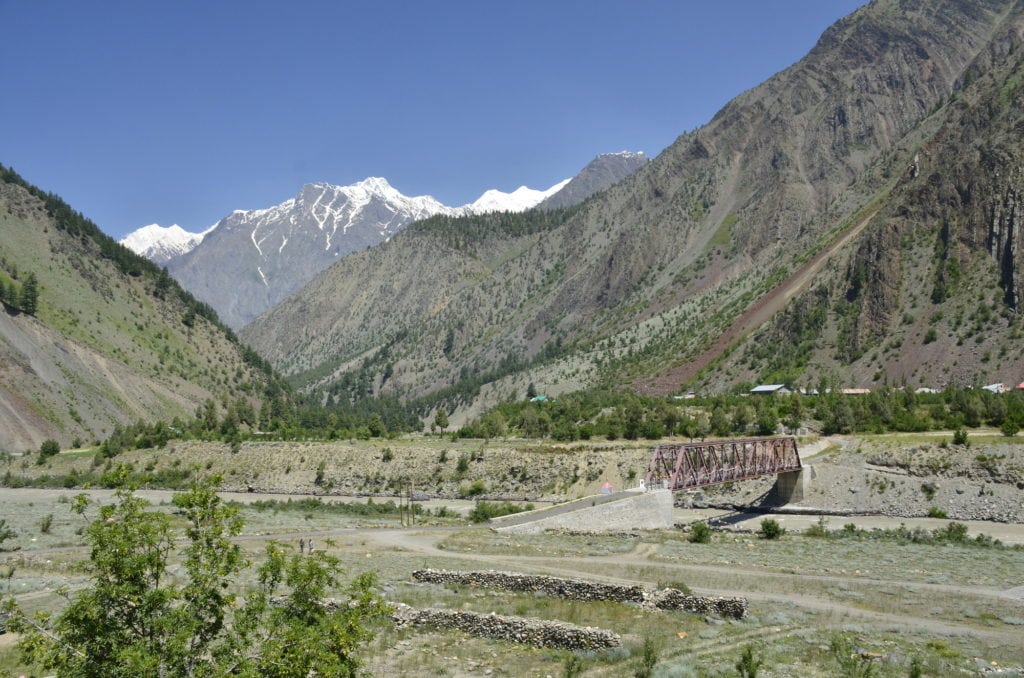
Chenab Valley
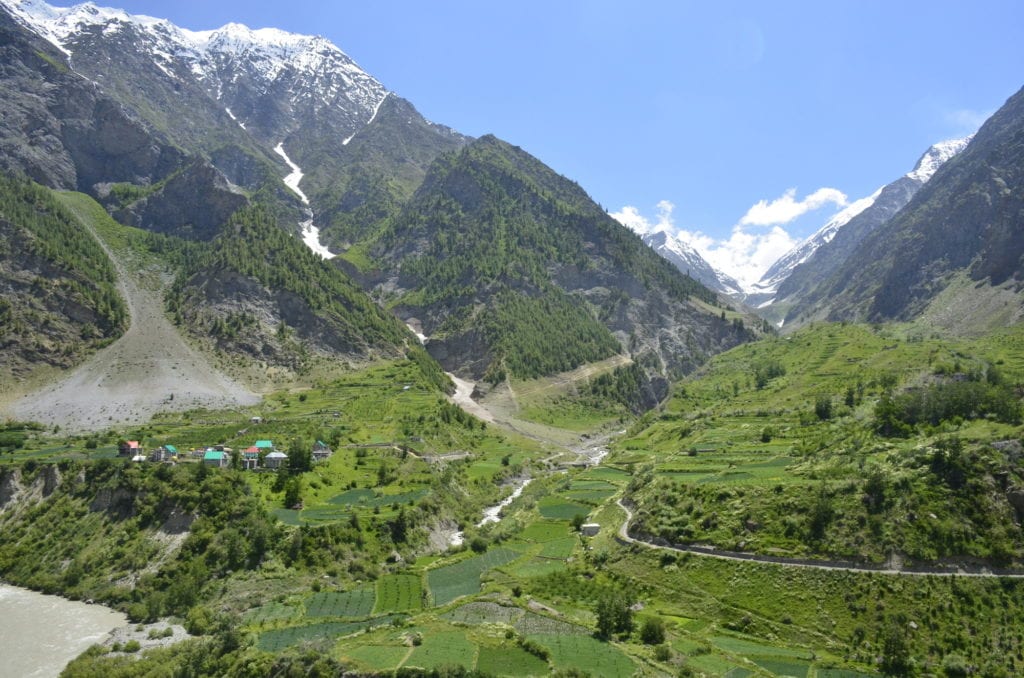
Around Trilokanath in Lahaul
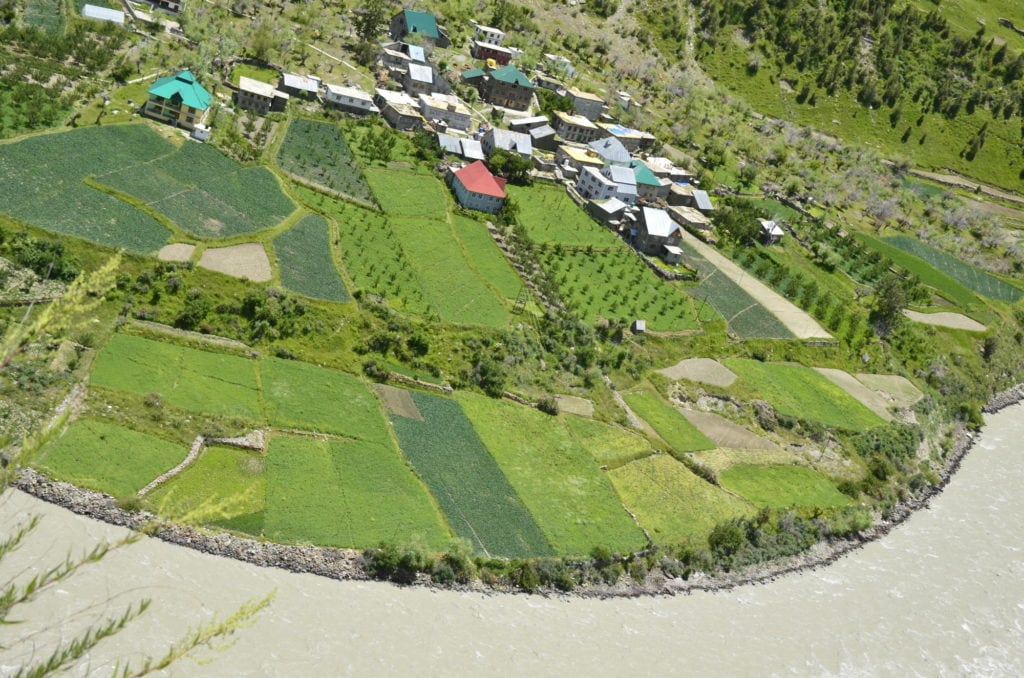
Farming at the riverfront of Chandrabagha
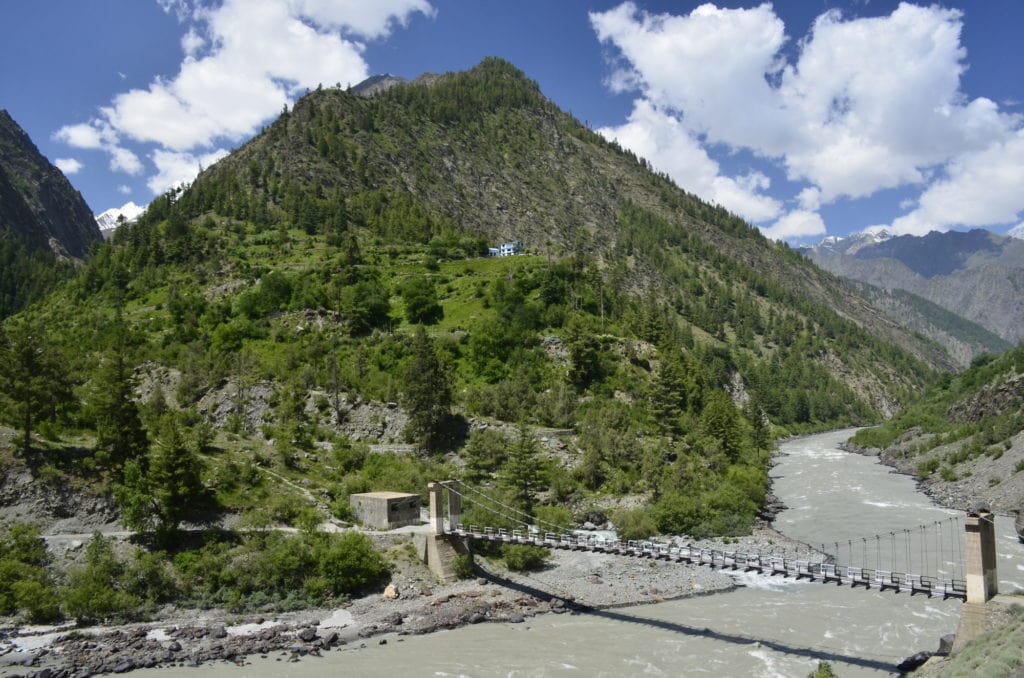
The many suspension bridges across Chandrabagha

